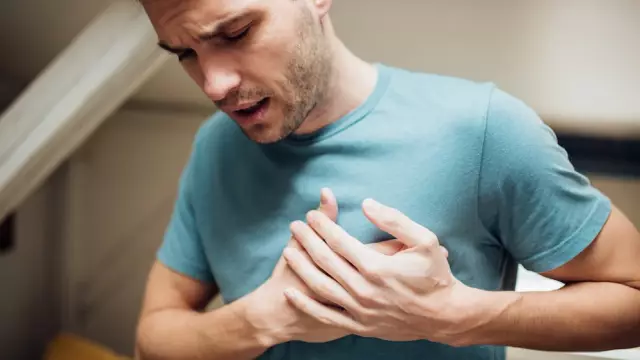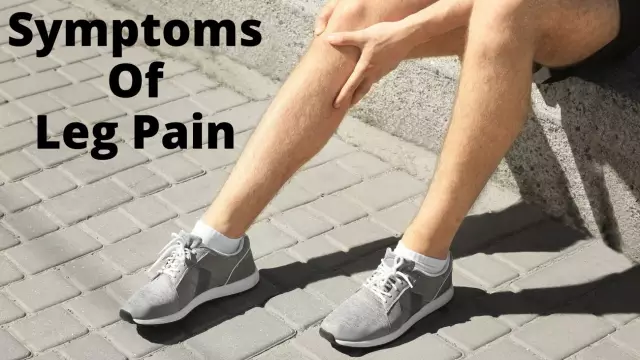- Author Rachel Wainwright [email protected].
- Public 2023-12-15 07:39.
- Last modified 2025-11-02 20:14.
Chest muscles
Chest muscles. general information
The muscles of the chest or, as they are also called, the muscles of the chest are divided into several groups: one of them begins on the surface of the chest and goes towards the free upper limb and to the belt of the upper limb. Another group is the own muscles of the chest, which are part of the walls of the chest cavity.

So, the muscles related to the upper limb:
- pectoralis major muscle (BMM). Its beginning is located in the area of the following formations: the medial half of the clavicle, the anterior wall of the rectus abdominis muscle, the cartilage of the ribs and the anterior surface of the sternum. The BGM is attached to the tubercle of the humerus. The lateral edge of the BMB is separated from the deltoid muscle of the shoulder by a groove, which has an extension under the collarbone. In this place, a subclavian fossa is formed. The main functions of BGM include bringing the hand to the body, turning it inward, and bending the arm. In addition, BGM takes part in breathing and pulling up the trunk;
- the pectoralis minor or pectoralis minor (MGM) is a muscle that lies under the BHM. Attaches to the shoulder blade. Its functions are: pulling the scapula down during contraction, participation in breathing;
- subclavian muscle of the chest. Located between the first rib and the collarbone. Participates in the strengthening of the sternoclavicular joint and pulling the clavicle down;
- the serratus anterior chest muscle is located on the lateral surface of the chest. It starts from the upper ribs, is attached in the region of the medial edge of the scapula. Its functions include the formation of a wide muscle loop (together with the rhomboid muscle), the purpose of which is to press the scapula to the body.
It is customary to refer to your own chest muscles as described below:
- external intercostal muscles that fill the spaces between the ribs from the spine to the cartilage of the ribs. These muscles take their origin from the lower edge of each of the ribs, while attaching to the underlying rib;
- the internal intercostal muscles (VMM) are located under the external ones, have the opposite direction of the fibers in relation to them. They start from the upper edge of the underlying rib, are attached to the overlying rib;
- subcostal muscles of the chest. The direction of their fibers coincides with the direction of the BMM. Located in the corner of the ribs, on the inner surface of the lower chest;
- the transverse pectoralis muscle is also located in the anterior region of the surface lining the inner thorax. It continues the transverse abdominal muscle. Participates in raising the ribs, expanding the chest, breathing.
Exercises for the muscles of the chest
Harmoniously and correctly developed pectoral muscles in men are a sign of masculinity, beautiful breasts in women are a guarantee of pride for their owner. And in fact, and in another case, behind the beauty of the body are serious training, including exercises for the muscles of the chest.
Experts say that excessive stress, that is, the inclusion of chest muscles in every workout, is fraught with their overload. When the chest muscles are noticeably sore after training, this is direct evidence that the load is excessive. On the other hand, mild and pleasant "work" pain is a sign of a well-prepared workout.
Exercises for the muscles of the chest should be included in the training plan no more than 2 times a week (especially for beginners). The most effective basic chest exercises are:
- bench press on an incline bench. An exercise that engages the upper chest muscles. Lying on a stable bench with an incline, the loaded bar is taken on straightened arms. Then it is slowly lowered to the upper chest, while the elbows are moved apart, after which it is necessary to squeeze it until the arms are fully extended. Take several approaches;
- push-ups on the uneven bars are aimed at developing the lower and outer parts of the chest muscles. The distance between the bars should be about 70-80 cm, otherwise the load will go to the triceps. In addition, the maximum load on the pectoral muscles is carried out if, when lowering the body, the elbows are apart, the knees are bent, and the body is tilted forward;
- push-ups from the floor - an exercise for the chest muscles that does not require special equipment. In this case, an effect is exerted on the lower or upper parts of the chest muscles, depending on the selected stress emphasis;
- crossovers are called hand-blocking, in which the muscles of the inner and lower parts of the chest are involved. It is believed that the efficiency of working on crossovers is higher than when breeding dumbbells. In addition, crossover ranges of motion are higher compared to bench presses. This exercise option is ideal for athletes whose muscles do not respond well to the bench press.
Strengthening the chest muscles
Exercises to strengthen the muscles of the chest is a slightly different category of physical activity preferred by women. The main emphasis is not on building mass, but on giving the muscles, and, as a result, the chest, an attractive shape. In this case, one should not be guided by the fact that the muscles of the chest do not hurt after exercise. Exercise can be effective without the proper stretching of the muscles. The following exercises will be helpful:
- clenching the palms in front of you. The exercise is aimed at strengthening the muscles of the chest and arms. Palms pointing upwards should be joined together in front of the chest. For 10 seconds, it is necessary to press them together with effort, then take a 5-second break. Repeat 10 to 15 times. You can enhance the effect by using an elastic ball or a small expander;
- breeding dumbbells to the sides. The exercise is performed while lying on your back. A dumbbell weighing 2 kg or less should be taken in each hand if the muscles are fragile. Bend your arms slightly at the elbows, take them in front of the chest. Having taken a breath, it is necessary to slowly spread your arms to the sides, without touching the floor. If you do the exercise slowly and carefully, you can feel that point of tension where your hands begin to shake slightly. It should be taken as the end point of the movement. After that, just as slowly, the hands return to their original position. Repeat 10-15 times;
- "Scissors" with dumbbells. Dumbbells are also useful for this exercise, or if the arm muscles are not yet strong enough, you can do without them using the weight of the arms and air resistance. It is necessary to stand up straight, take dumbbells in each hand, stretch your straight arms forward. Now you should slowly cross your arms in front of you at chest level. The range of motion can be either small (spread your arms at a distance of 15-20 cm and quickly cross) or large (spread your arms all the way). The speed changes in proportion to the distance.
If chest muscles hurt after such exercises, you should reduce the number of approaches or try to work without weights.
Found a mistake in the text? Select it and press Ctrl + Enter.






